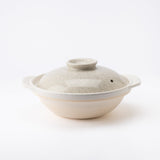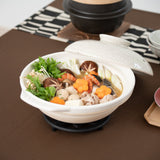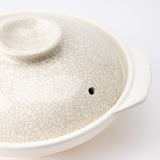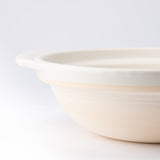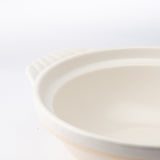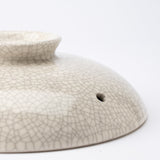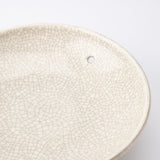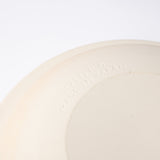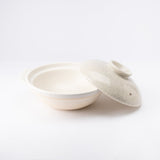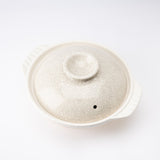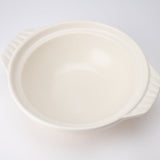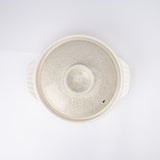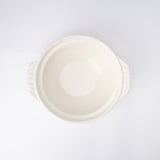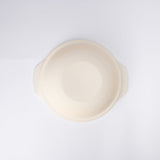Ginpo White Kannyu Banko Donabe Japanese Clay Pot for 3 persons
The "Sumi(Ink)-Kannyu" series is the oldest of GINPO's earthenware pots; the design, introduced in 1955, was an innovation of the company's founder and is still loved by many people.
The "Kannyu" decorative technique, which at the time was only used for small ceramic items such as Matcha bowls, was used to intentionally create fine cracks in the surface glaze. In addition, sumi ink was used to make the pattern stand out even more. The success of this difficult design in pots for the general household was one of the company's early achievements.
With a little shallow shape, the size of 2.2L(74.4oz) is suitable for 3 persons to enjoy Donabe dishes. For other dishes such as soup, stew, curry, cheese fondue, it can cook up to 4 persons.
It can be used with open flame, electric cooktop and oven.
Note: This earthenware pot is not compatible with induction cooktops.
It can be used immediately after purchase because it does not need to be seasoned before use.
It is 15% lighter than conventional products while retaining the heat retaining properties of clay pots.
Banko Ware has excellent heat resistance, durability, and heat retention properties. It is also resistant to heat, making it difficult for food to cool down. The far-infrared ray effect locks in the umami of the food.
The outside bottom of the Donabe may have some reddish-brown coloring due to the firing process. Also, the lid is different from piece to piece in the state of "Kannyu" process, and in rare cases, small air bubbles may be seen, but we hope you will consider this as one of the characteristics of handmade products.
PRODUCT DETAIL
- Quantity: 1
- Dimension: D32.5cm(12.8in) x H15cm(5.9in) / For 3 people
- Capacity: 2.2L(74.4oz)
- Material: Stoneware (Non-induction cookware)- Banko Ware
- Origin: Made in Japan
- Brand: GINPO
-
Note: The outside bottom and sides of the Donabe are not glazed. Boil over stains may start to appear on these areas once you start using the Donabe.

Tag @musubikiln for a chance to be featured
On Instagram
ABOUT GINPO
In 1932, Sutematsu Kumamoto, the first generation of the company, built a factory to realize high quality manufacturing that I can be satisfied with.
In the midst of hardships and challenges, he listened to the voices of users and continued to develop earthenware pots that fit into people's lives. The "Kikka" series, completed through this history, continues to bring smiles to diners around the world.
About BaNKO ware
Yokkaichi Banko ware is a ceramic ware produced in Yokkaichi City, Mie Prefecture. Since ancient times, it has been used to make daily necessities such as tea bowls and plates, as well as works of art such as vases.
Today, Kyusu teapots and earthenware pots are representative products of Banko ware, and earthenware pots in particular account for 80% to 90% of all earthenware pots produced in Japan.
Yokkaichi Banko ware is characterized by the excellent heat resistance due to the ceramic clay used. The clay used for earthenware pots is mixed with about 40% lithium ore called petalite, which has a high heat resistance. This technique is patented by Yokkaichi Banko ware and cannot be seen anywhere else.















